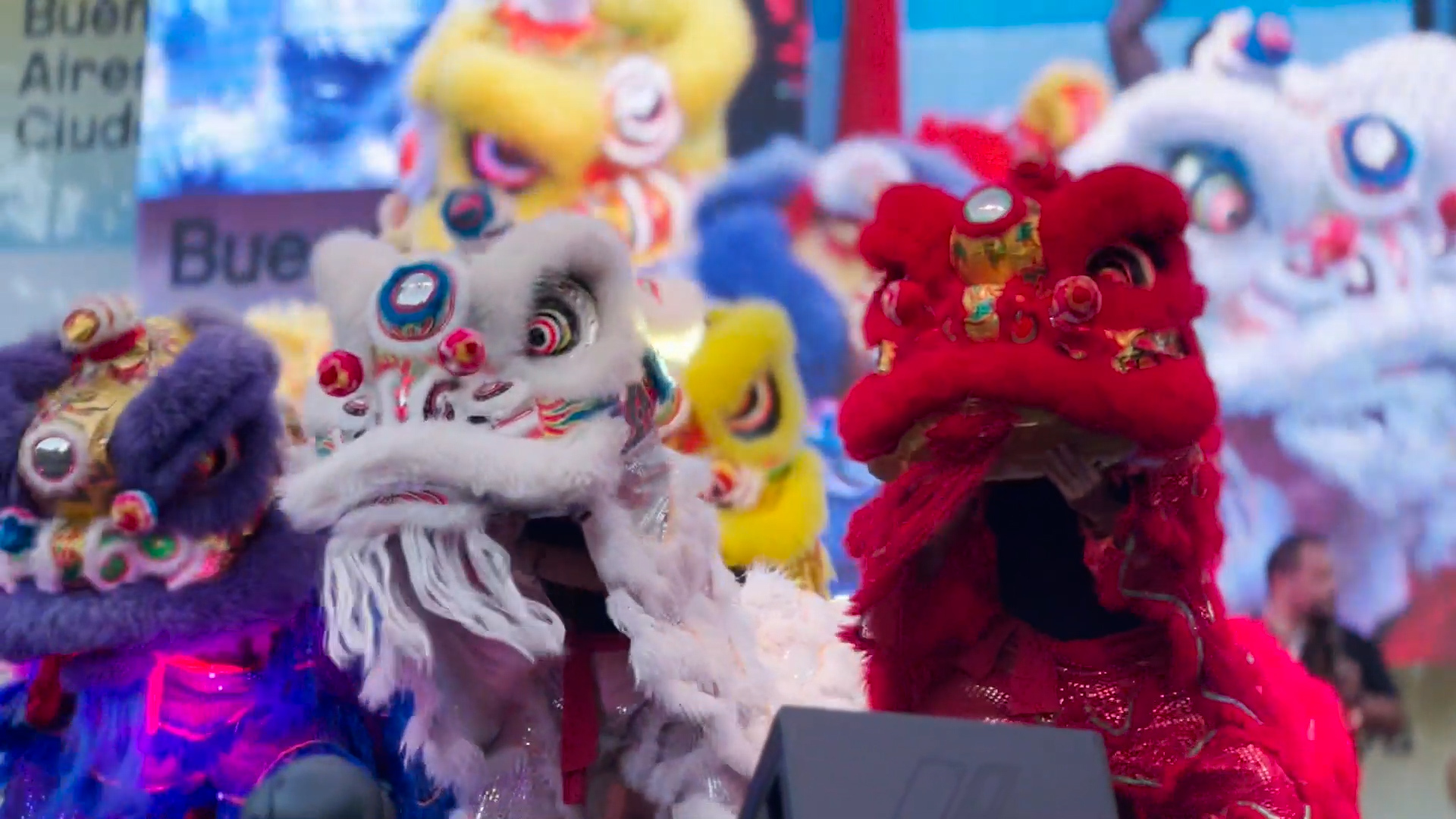This is how the Chinese New Year is lived in Latin America 6:23
(CNN Spanish) --
A new lunar year has officially begun, the number 4720 in the Chinese calendar, and Latin America was not left out of the celebrations: from Mexico City to Buenos Aires, the region joined the celebrations to give the welcome to the water tiger.
The advance of the omicron variant of the new coronavirus meant that face-to-face celebrations in the country with the largest Chinese community in the region, Peru, had to be suspended.
However, in other countries such as Argentina, the community did carry out its traditional celebration and in Mexico, although the activities were virtual, Chinatown was dyed red and the people who visited it were able to enjoy its shops and restaurants.
Chinese New Year 2022: welcome to the Year of the Tiger
The lion and dragon dances
In Asia, Chinese New Year celebrations —its official name is actually Lunar New Year or Spring Festival— begin on the first day of the first lunar month in the Chinese calendar and last for 15 days, when the moon arrives. full.
The final celebration is the Lantern Festival, where the famous dragon dance is performed.
In the neighborhood of Belgrano, in Buenos Aires, the dragon and lion dances, for which members of the community train for months, were one of the central points of this year's celebration, which brought together members of the Chinese community in the country with neighbors and tourists who came to participate.
"In the Chinese New Year it is customary to bring new energy, new things, cleanliness. And well, what the lion does is that, it is to drive out evil spirits," explained instructor Gonzalo Jara regarding this dance.
advertising
ubiquitous red
Another tradition that cannot be missed to celebrate the Chinese New Year is that of red: the color is a symbol of prosperity and luck, and also provides protection: red clothing and decorations abounded.
If your year in the Chinese horoscope corresponds to the tiger, in addition, it is desirable that you always wear a red garment since - as Carolina Shang, vice president of Phoenix Dorada International in Buenos Aires, explained to CNN - it is possible that this year you will face difficulties and obstacles, and wearing a red garment or accessory will protect you.
culinary delights
In both Mexico and Argentina, the Chinese preparations took place the weekend before the start of the new year, which is when the celebrations took place.
Dumplings, a symbol of wealth, are one of the foods sold in Belgrano, while in Mexico City's Chinatown, in addition to the savory options that also include ramen, sweet baozi could be seen.
Chinese communities in Latin America
It is difficult to handle accurate numbers on Chinese communities in Latin America, explains research by Miguel Montoya of the University of Monterrey.
However, the largest are known to be in Peru, Mexico, Argentina, Venezuela, Brazil, Panama and Cuba.
The community of Peru is not only the largest in numerical terms, but it also stands out because it has great roots and influence in the political and economic spheres.
In addition to its links with the rest of the country's communities, the Chinese community in Peru "has preserved its ancestral values, largely because families and associations have been fundamental in keeping its members united, both internally in the host country and externally with the mother country," he explains.
A figure revealed in a study by the Inter-American Development Bank (IDB) allows us to measure its presence: 10% of the country's current population is of Chinese descent.
In the 19th century, specifically in the second half, some 100,000 Chinese arrived in Peru.
This is what the arrival of the Year of the Tiger looked like from space 0:43
The community in Argentina is one of the youngest in Latin America and has approximately 120,000 inhabitants.
More than half arrived from 2005, according to official data.
Many came from Fujian province and went into retail, where they currently have a strong position in Buenos Aires: according to the city government, there are more than 4,000 Chinese supermarkets where some 4 million people shop.
According to government data, immigration from China is the fourth largest in the country;
it follows the immigrants who arrive from Bolivia, Paraguay and Peru.
80% reside in the capital and the suburbs of Buenos Aires.

